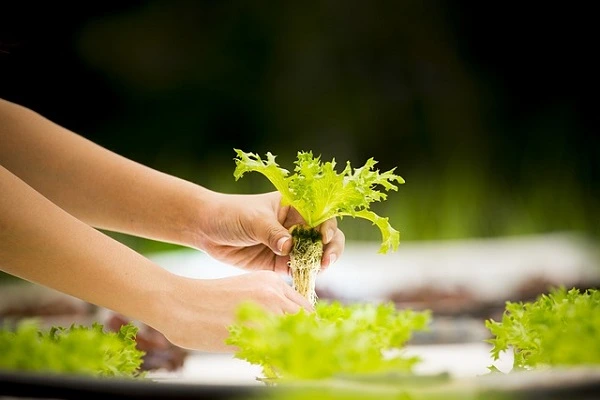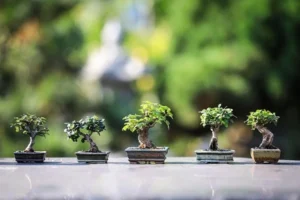Gardening without soil? It might sound like magic, but it’s real! Hydroponics is a simple way to grow plants using only water and nutrients—no dirt needed.
This method is clean, space-saving, and allows plants to thrive indoors, no matter the time of year.
Imagine growing leafy greens, herbs, or even strawberries right in your kitchen or classroom!
For kids, hydroponics is more than just a gardening project—it’s an exciting hands-on science experiment. They’ll learn how plants absorb nutrients, see roots growing up close, and explore the role of light, water, and air in plant growth.
It’s a great way to teach responsibility, patience, and sustainability. Plus, plants grow faster in a hydroponic system, so kids won’t have to wait long to see results.
Best of all, setting up a DIY hydroponic system is easy. With just a few supplies, kids can start their own indoor garden and experience the joy of growing their own food.
Why DIY Hydroponics is Perfect for Kids
Hydroponics isn’t just about growing plants—it’s an exciting way for kids to experiment, learn, and have fun while watching their own little garden thrive. It turns science into a hands-on adventure, making learning feel like play. Here’s why hydroponics is a perfect project for kids of all ages!
Encourages STEM Learning
- Hydroponics is a real-life science experiment where kids explore biology, chemistry, and engineering.
- They’ll learn how plants absorb nutrients, how water pH affects growth, and even experiment with light and oxygen levels.
- It’s a great introduction to STEM (Science, Technology, Engineering, and Math) without textbooks or boring lessons.
Teaches Responsibility and Patience
- Plants need care just like pets! Kids will learn to check water levels, adjust nutrients, and monitor growth regularly.
- Watching a tiny seed turn into a leafy green teaches patience and the reward of hard work.
- Since hydroponics plants grow faster than soil-based ones, kids won’t have to wait too long to see results!
Works in Small Spaces
- No backyard? No problem! Hydroponic gardens fit anywhere—on a windowsill, kitchen counter, or even a bedroom shelf.
- Unlike traditional gardening, there’s no mess, no mud, and no need for heavy pots of soil.
- It’s perfect for families in small apartments or homes without outdoor space.
Sparks Curiosity and Creativity
- Kids can test different growing methods, compare plant sizes, or even build their own hydroponic system from scratch.
- They’ll love keeping a plant journal, sketching growth changes, and making predictions.
- Encourage them to experiment with different plants, from lettuce and basil to strawberries and peppers!
Makes Healthy Eating Fun
- Imagine the excitement of eating a homegrown salad or making tea from fresh mint they grew themselves!
- Kids are more likely to eat vegetables and herbs if they’ve grown them with their own hands.
- Hydroponics makes food more personal, teaching kids the importance of fresh, homegrown ingredients.
Great for Year-Round Gardening
- No need to wait for the right season—hydroponics lets kids grow plants anytime!
- Whether it’s snowing outside or too hot to garden, they can still enjoy watching their plants grow indoors.
Hydroponics is more than just a fun DIY project—it’s a living science lab, a way to build responsibility, and a chance to explore nature indoors. So, grab some seeds, set up a system, and let the growing begin!
Step-by-Step Guide to Building a Simple Hydroponic System
Building a hydroponic system at home is easier than you think. Follow these steps to create a simple setup that lets you grow plants indoors with no soil!
Step #1. Choose Your Plants
- Some plants grow better in hydroponic systems than others.
- Great beginner-friendly choices include lettuce, basil, mint, cilantro, and strawberries.
- Leafy greens grow quickly, while herbs are small and easy to maintain.
- Avoid plants with deep roots, like potatoes or carrots, as they need soil for support.
Step #2. Prepare the Container
- You’ll need a reservoir to hold water and nutrients.
- A plastic storage bin, mason jar, or large bucket works well.
- If using a container with a lid, cut holes to fit net pots or small plastic cups.
- The container should be dark or covered to prevent algae growth from excess light.
Step #3. Add the Growing Medium
- Since hydroponics doesn’t use soil, plants need support.
- Use a growing medium like clay pebbles, rock wool cubes, coconut coir, and sponges.
- Place the plant roots or seeds in the medium inside the net pots.
Step #4. Set Up the Nutrient Solution
- Hydroponic plants need nutrients dissolved in water to grow.
- Use a pre-mixed hydroponic nutrient solution (available online or in garden stores).
- Mix the nutrients with filtered or tap water, following the package instructions.
- Check the pH level with a test kit (ideal range: 5.5–6.5).
- Adjust the pH using pH up or pH down solutions if needed.
Step #5. Ensure Proper Light and Airflow
- Plants need plenty of light to grow strong and healthy.
- If near a sunny window, ensure they get at least 6–8 hours of sunlight per day.
- If growing indoors, use LED grow lights for 12–16 hours daily.
- Airflow is also important—use a small fan to keep fresh air circulating.
- In water-based systems like Deep Water Culture (DWC), an air pump with an air stone helps oxygenate the water, preventing root rot.
Step #6. Monitor and Maintain the System
- Check water levels daily and top off as needed.
- Replace the nutrient solution every 1–2 weeks to keep plants healthy.
- Watch for plant growth and adjust the light if needed.
- If leaves turn yellow, it may be a sign of nutrient deficiency—adjust the solution accordingly.
- Keep a growth journal to track changes and make adjustments.
With just a little care, your DIY hydroponic system will soon be filled with homegrown greens, herbs, and even small fruits.
Fun Experiments & Activities for Kids
Hydroponics offers lots of exciting opportunities for hands-on learning, and kids will love exploring these fun experiments and activities. Here are a few creative ways to dive into the science behind growing plants without soil:
Compare Hydroponics with Soil-Grown Plants
- Grow the same type of plant, such as lettuce or basil, in both a hydroponic system and traditional soil.
- Have kids measure and observe both plants over time, noting differences in growth speed, leaf size, and overall health.
- Discuss how the hydroponic plants seem to grow faster or with fewer pests and why that might be.
- This experiment helps kids understand the advantages of hydroponic systems, like less need for pesticides and quicker growth rates.
Observe Plant Growth Under Different Light Conditions
- Set up a few plants under different light sources: natural sunlight, LED grow lights, and even fluorescent lights.
- Have kids record how the plants react to each light source. Do they grow taller under certain lights? Do some plants seem to thrive more than others?
- This experiment teaches kids the importance of light in photosynthesis and how it impacts plant health.
- It’s a fun way to explore the role of light in growing food indoors, especially if you’re growing in winter months when sunlight is limited.
Keep a Plant Growth Journal
- Encourage kids to measure their plants’ height, track the number of leaves, and even draw pictures of them every few days.
- They can document observations like the color of leaves, whether the plants are flowering, or how much water is needed.
- This activity teaches kids about data collection and how science works through observation and tracking.
- Over time, the journal becomes a way to see how plants change and grow, creating a fun record of their gardening journey.
These simple experiments not only make hydroponics fun but also teach kids important scientific concepts. From comparing growth environments to experimenting with light and tracking progress, they’ll gain a deeper understanding of how plants thrive and the best conditions for healthy growth.
Common Problems and How to Fix Them
Even plants can run into problems, but that’s part of the fun! Think of yourself as a plant detective, solving little mysteries to help your garden grow. Here are some common issues and how you can fix them.
Algae Growth – The Green Slime Mystery!
- Have you noticed green or brown slime in the water? That’s algae!
- Algae love light and nutrients, just like plants, but they steal food meant for your greens.
- Help fix it: Cover the container with dark material so light can’t reach the water. Make sure no extra water is sitting open.
Root Rot – The Case of the Smelly Roots!
- If plant roots turn brown, mushy, or smell bad, they may be rotting.
- This happens when water sits too long without enough oxygen.
- Be a plant doctor: Add an air pump with an air stone to keep the water fresh. Change the water regularly.
Nutrient Deficiencies – Hungry Plants!
- Are the leaves turning yellow or curling? The plants might need more nutrients.
- Just like people need vitamins, plants need a balanced mix of minerals.
- Help them grow: Check the pH level (aim for 5.5–6.5) and add hydroponic nutrients.
With a little care and attention, your plants will stay strong and healthy. Keep an eye on them and be their hero!
Go For It!
Hydroponics is an exciting, mess-free way for kids to grow plants indoors. No soil means no dirt—just water, nutrients, and a little care! It’s a great way to learn about science, responsibility, and sustainability while watching plants grow faster than in traditional gardens.
Plus, since hydroponic systems don’t take up much space, you can grow plants on a windowsill, kitchen counter, or even in the bedroom of a small apartment.
Once you’ve successfully grown lettuce, basil, or mint, why not experiment with something new? Try growing strawberries, cherry tomatoes, or peppers.
Want an extra challenge?
Test different hydroponic methods, like the Kratky system (no electricity needed!) or deep water culture (great for bigger plants).
Hydroponic gardening encourages creativity and curiosity. Kids can test different light sources, water levels, or even DIY nutrient solutions to see what helps plants thrive. Keeping a plant journal with growth measurements, drawings, and fun observations makes it even more exciting.
On top of that, you can turn your hydroponic garden into a fun competition! Challenge siblings or friends to see whose plants grow the tallest or fastest. Or, start a “hydroponic chef” challenge by growing your own ingredients for a homemade salad. Gardening has never been this fun—so grab some seeds and start growing today!




